On Egyptian Pyramids and Why It’s Definitely Aliens
History is rather dull and unexciting to most people, which naturally invites exciting flights of fancy that can range from the innocent to outright conspiracies. Nobody truly believes that the …read more


History is rather dull and unexciting to most people, which naturally invites exciting flights of fancy that can range from the innocent to outright conspiracies. Nobody truly believes that the astounding finds and (fully functioning) ancient mechanisms in the Indiana Jones & Uncharted franchises are real, with mostly intact ancient cities waiting for intrepid explorers along with whatever mystical sources of power, wealth or influence formed the civilization’s foundations before its tragic demise. Yet somehow Plato’s fictive Atlantis has taken on a life of its own, along with many other ‘lost’ civilizations, whether real or imagined.
Of course, if these aforementioned movies and video games were realistic, they would center around a big archaeological dig and thrilling finds like pot shards and cuneiform clay tablets, not ways to smite enemies and gain immortality. Nor would it involve solving complex mechanical puzzles to gain access to the big secret chamber, prior to walking out of the readily accessible backdoor. Reality is boring like that, which is why there’s a major temptation to spruce things up. With the Egyptian pyramids as well as similar structures around the world speaking to the human imagination, this has led to centuries of half-baked ideas and outright conspiracies.
Most recently, a questionable 2022 paper hinting at structures underneath the Pyramid of Khafre in Egypt was used for a fresh boost to old ideas involving pyramid power stations, underground cities and other fanciful conspiracies. Although we can all agree that the ancient pyramids in Egypt are true marvels of engineering, are we really on the cusp of discovering that the ancient Egyptians were actually provided with Forerunner technology by extraterrestrials?
The Science of Being Tragically Wrong
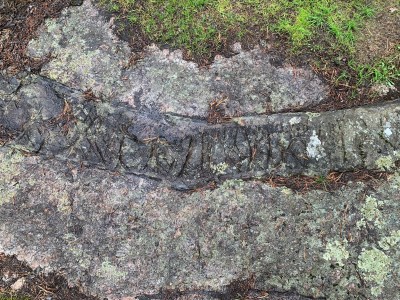
In defense of fanciful theories regarding the Actual Truth about Ancient Egypt and kin, archaeology as we know it today didn’t really develop until the latter half of the 20th century, with the field being mostly a hobbyist thing that people did out of curiosity as well as a desire for riches. Along the way many comical blunders were made, such as the Runamo runes in Sweden that turned out to be just random cracks in dolerite.
about Ancient Egypt and kin, archaeology as we know it today didn’t really develop until the latter half of the 20th century, with the field being mostly a hobbyist thing that people did out of curiosity as well as a desire for riches. Along the way many comical blunders were made, such as the Runamo runes in Sweden that turned out to be just random cracks in dolerite.
Less funny were attempts by colonists to erase Great Zimbabwe (11th – ~17th century CE) and the Kingdom of Zimbabwe after the ruins of the abandoned capital were discovered by European colonists and explored in earnest by the 19th century. Much like the wanton destruction of local cultures in the Americas by European colonists and explorers who considered their own culture, religion and technology to be clearly superior, the history of Great Zimbabwe was initially rewritten so that no thriving African society ever formed on its own, but was the result of outside influences.
In this regard it’s interesting how many harebrained ideas about archaeological sites have now effectively flipped, with mystical and mythical properties being assigned and these ‘Ancients’ being almost worshipped. Clearly, aliens visited Earth and that led to pyramids being constructed all around the globe. These would also have been the same aliens or lost civilizations that had technology far beyond today’s cutting edge, putting Europe’s fledgling civilization to shame.
Hence people keep dogpiling on especially the pyramids of Giza and its surrounding complex, assigning mystical properties to their ventilation shafts and expecting hidden chambers with technology and treasures interspersed throughout and below the structures.
Lost Technology
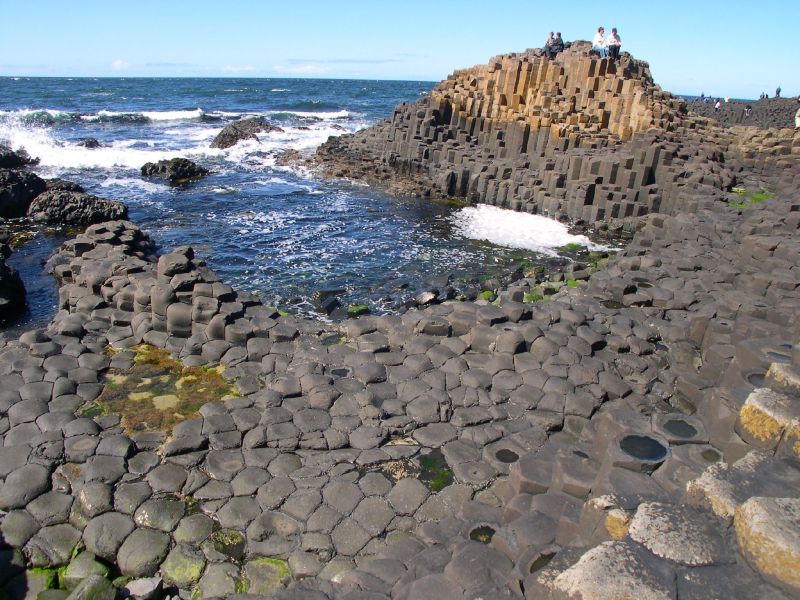
The idea of ‘lost technology’ is a pervasive one, mostly buoyed by the axiom that you cannot disprove something, only find evidence for its absence. Much like the possibility of a teapot being in orbit around the Sun right now, you cannot disprove that the Ancient Egyptians did not have hyper-advanced power plants using zero point energy back around 3,600 BCE. This ties in with the idea of ‘lost civilizations‘, which really caught on around the Victorian era.
Such romanticism for a non-existent past led to the idea of Atlantis being a real, lost civilization becoming pervasive, with the 1960s seeing significant hype around the Bimini Road. This undersea rock formation in the Bahamas was said to have been part of Atlantis, but is actually a perfectly cromulent geological formation. More recently a couple of German tourists got into legal trouble while trying to prove a connection between Egypt’s pyramids to Atlantis, which is a theory that refuses to die along with the notion that Atlantis was some kind of hyper-advanced civilization and not just a fictional society that Plato concocted to illustrate the folly of man.
Admittedly there is a lot of poetry in all of this when you consider it from that angle.
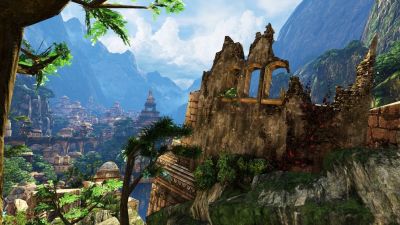
People have spent decades of their life and countless sums of money on trying to find Atlantis, Shangri-La (possibly inspired by Shambhala), El Dorado and similar fictional locations. The Iram of the Pillars which featured in Uncharted 3: Drake’s Deception is one of the lost cities mentioned in the Qur’an, and is incidentally another great civilization that saw itself meet a grim end through divine punishment. Iram is often said to be Ubar, which is commonly known as Atlantis of the Sands.
All of this is reminiscent of the Giant’s Causeway in Northern Ireland, and corresponding area at Fingal’s Cave on the Scottish isle of Staffa, where eons ago molten basalt cooled and contracted into basalt columns in a way that is similar to how drying mud will crack in semi-regular patterns. This particular natural formation did lead to many local myths, including how a giant built a causeway across the North Channel, hence the name.
Fortunately for this location, no ‘lost civilization’ tag became attached, and thus it remains a curious demonstration of how purely natural formations can create structures that one might assume to have required intelligence, thus providing fuel for conspiracies. So far only ‘Young Earth’ conspiracy folk have put a claim on this particular site.
What we can conclude is that much like the Victorian age that spawned countless works of fiction on the topic, many of these modern-day stories appear to be rooted in a kind of romanticism for a past that never existed, with those affected interpreting natural patterns as something more in a sure sign of confirmation bias.
Tourist Traps
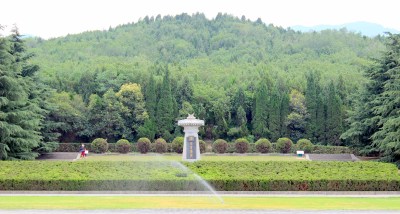
One can roughly map the number of tourist visits with the likelihood of wild theories being dreamed up. These include the Egyptian pyramids, but also similar structures in what used to be the sites of the Aztec and Maya civilizations. Similarly the absolutely massive mausoleum of Qin Shi Huang in China with its world-famous Terracotta Army has led to incredible speculation on what might still be hidden inside the unexcavated tomb mound, such as entire seas and rivers of mercury that moved mechanically to simulate real bodies of water, a simulated starry sky, crossbows set to take out trespassers and incredible riches.
Many of these features were described by Sima Qian in the first century BCE, who may or may not have been truthful in his biography of Qin Shi Huang. Meanwhile, China’s authorities have wisely put further excavations on hold, as they have found that many of the recovered artefacts degrade very quickly once exposed to air. The paint on the terracotta figures began to flake off rapidly after excavation, for example, reducing them to the plain figures which we are familiar with.
Tourism can be as damaging as careless excavation. As popular as the pyramids at Giza are, centuries of tourism have taken their toll, with vandalism, graffiti and theft increasing rapidly since the 20th century. The Great Pyramid of Khufu had already been pilfered for building materials over the course of millennia by the local population, but due to tourism part of its remaining top stones were unceremoniously tipped over the side to make a larger platform where tourists could have some tea while gazing out over the the Giza Plateau, as detailed in a recent video on the History for Granite channel:
The recycling of building materials from antique structures was also the cause of the demise of the Labyrinth at the foot of the pyramid of Amenemhat III at Hawara. Once an architectural marvel, with reportedly twelve roofed courts and spanning a total of 28,000 m2, today only fragments remain of its existence. This sadly is how most marvels of the Ancient World end up: looted ruins, ashes and shards, left in the sand, mud, or reclaimed by nature, from which we can piece together with a lot of patience and the occasional stroke of fortune a picture what it once may have looked like.
Pyramid Power

When in light of all this we look at the claims made about the Pyramid of Khafre and the persistent conspiracies regarding this and other pyramids hiding great secrets, we can begin to see something of a pattern. Some people have really bought into these fantasies, while for others it’s just another way to embellish a location, to attract more rubes tourists and sell more copies of their latest book on the extraterrestrial nature of pyramids and how they are actually amazing lost technologies. This latter category is called pseudoarcheology.
Pyramids, of course, have always held magical powers, but the idea that they are literal power plants seems to have been coined by one Christopher Dunn, with the publication of his pseudo-archeological book The Giza Power Plant in 1998. That there would be more structures underneath the Pyramid of Khafre is a more recent invention, however. Feeding this particular flight of fancy appears to be a 2022 paper by Filippo Biondi and Corrado Malanga, in which synthetic aperture radar (SAR) was used to examine said pyramid interior and subsurface features.
Somehow this got turned into claims about multiple deep vertical wells descending 648 meters along with other structures. Shared mostly via conspiracy channels, it widely extrapolates from claims made in the paper by Biondi et al., with said SAR-based claims never having been peer-reviewed or independently corroborated. On the Rational Wiki entry for these and other claims related to the Giza pyramids are savagely tossed under the category of ‘pyramidiots’.
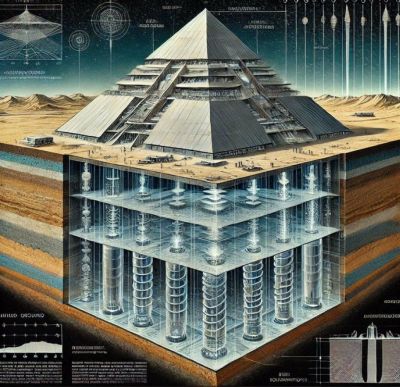
Back in the real world, archaeologists have found a curious L-shaped area underneath a royal graveyard near Khufu’s pyramid that was apparently later filled in, but which seems to lead to a deeper structure. This is likely to be part of the graveyard, but may also have been a feature that was abandoned during construction. Currently this area is being excavated, so we’re likely to figure out more details after archaeologists have finished gently sifting through tons of sand and gravel.
There is also the ScanPyramids project, which uses non-destructive and non-invasive techniques to scan Old Kingdom-era pyramids, such as muon tomography and infrared thermography. This way the internal structure of these pyramids can be examined in-depth. One finding was that of a number of ‘voids’, which could mean any of a number of things, but most likely do not contain world-changing secrets.
To this day the most credible view is still that the pyramids of the Old Kingdom were used as tombs, though unlike the mastabas and similar tombs, there is a credible argument to be made that rather than being designed to be hidden away, these pyramids would be eternal monuments to the pharaoh. They would be open for worship of the pharaoh, hence the ease of getting inside them. Ironically this would make them more secure from graverobbers, which was a great idea until the demise of the Ancient Egyptian civilization.
This is a point that’s made succinctly on the History for Granite channel, with the conclusion being that this goal of ‘inspiring awe’ to worshippers is still effective today, simply judging by the millions of tourists each year to these monuments, and the tall tales that they’ve inspired.





































































![Apple Releases iOS 18.5 Beta and iPadOS 18.5 Beta [Download]](https://www.iclarified.com/images/news/96907/96907/96907-640.jpg)
![Apple Seeds watchOS 11.5 to Developers [Download]](https://www.iclarified.com/images/news/96909/96909/96909-640.jpg)
![Apple Seeds visionOS 2.5 Beta to Developers [Download]](https://www.iclarified.com/images/news/96911/96911/96911-640.jpg)
![Apple Seeds tvOS 18.5 Beta to Developers [Download]](https://www.iclarified.com/images/news/96913/96913/96913-640.jpg)























































































































































































![[The AI Show Episode 142]: ChatGPT’s New Image Generator, Studio Ghibli Craze and Backlash, Gemini 2.5, OpenAI Academy, 4o Updates, Vibe Marketing & xAI Acquires X](https://www.marketingaiinstitute.com/hubfs/ep%20142%20cover.png)














































































































![Is this a suitable approach to architect a flutter app? [closed]](https://i.sstatic.net/4hMHGb1L.png)
















































































































